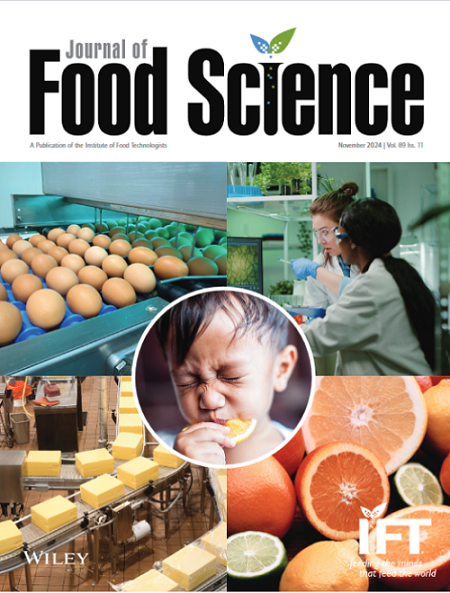Utilizing onion peel extract as photosensitizer combined with 405 nm blue light to control Salmonella Typhimurium on eggshells
Abstract
The use of blue light within a range of 400–470 nm holds significant potential for sanitization purposes. However, due to an extended exposure duration needed for an antibacterial effect, the utilization of a photosensitizer (PS) to increase the efficacy of the treatment becomes essential. This study investigated prospective use of onion peel extract as a PS in combination with 405 nm blue light for the inactivation of Salmonella Typhimurium, a common foodborne pathogen on eggs. Extracts were obtained using 99% ethanol, 50% ethanol, and distilled water (DW). Their photosensitizing activities were then compared. The combination of 405 nm blue light and onion peel extract using 99% ethanol reduced bacterial populations more effectively than blue light treatment alone, while also increasing reactive oxygen species generation, cell membrane permeability, lipid peroxidation, and DNA damage levels. However, the antimicrobial effect of the 99% ethanol extract did not show a concentration dependence. Spraying DW extract on eggshell treated with 99% ethanol onion peel extract at 1 mg/mL and blue light further enhanced Salmonella reduction. Liquid chromatography was conducted for component separation. However, none of the separated fractions exhibited a significant antibacterial effect, suggesting that the active compounds responsible for antibacterial activity might work synergistically in the crude extract rather than individually. In contrast, the crude extract exhibited a significant antibacterial effect, suggesting that 99% ethanol-extracted onion peel can serve as a PS, particularly in its crude state without purification, and effectively inactivate Salmonella on eggshells.
Practical Application
Antimicrobial blue light (aBL) in the range of 400–470 nm is a promising nonthermal technology with several advantages, including minimal impact on food quality and safety. This study optimized the concentration of onion peel extract to improve its effectiveness as a photosensitizer in aBL treatment against Salmonella Typhimurium on eggshells. These results may serve as a reference for further optimizing aBL treatments, offering a potentially sustainable and cost-effective photosensitizer for pathogen control.


 求助内容:
求助内容: 应助结果提醒方式:
应助结果提醒方式:


